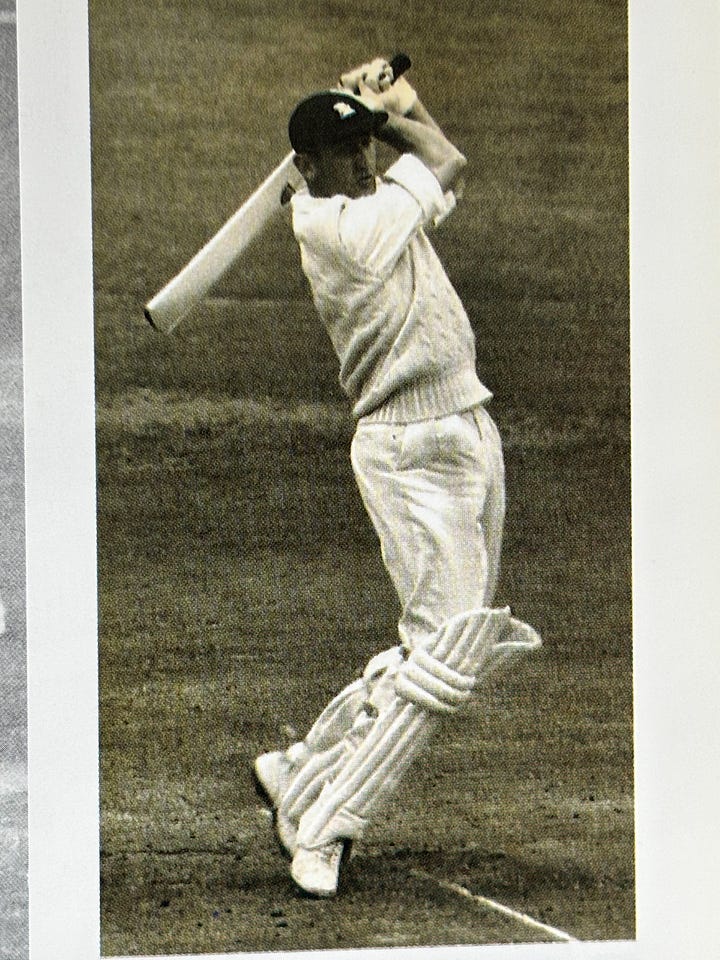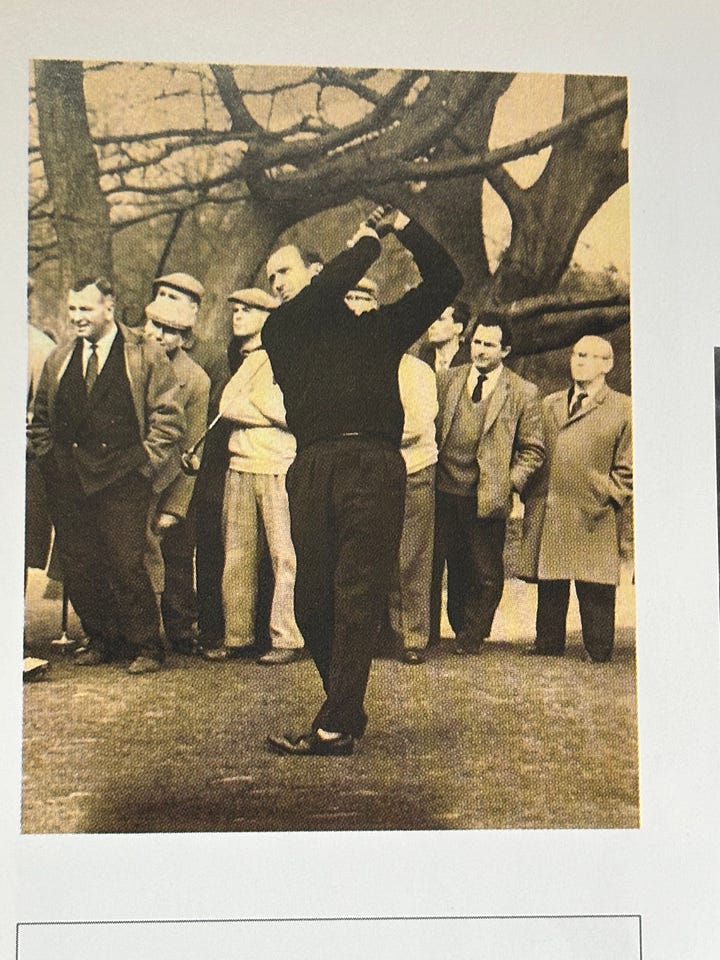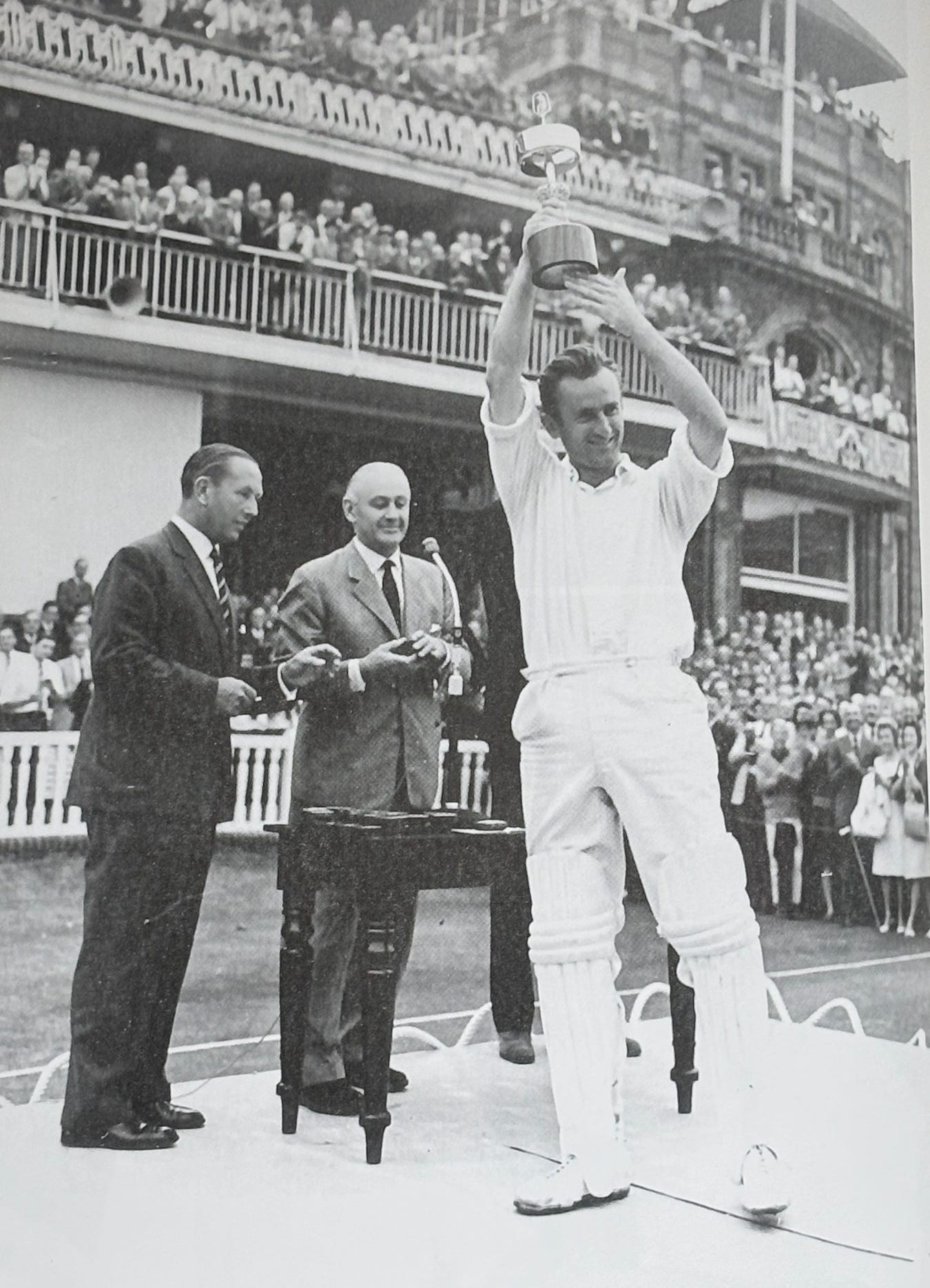Sussex captain Ted Dexter holds the Gillette Cup aloft in 1963 as inaugural winners.
Ted Dexter may have been born 90 years ago today (he died in 2021) but his legacy lives on. Not only is he the godfather of one-day leagues – the John Player Sunday League was largely his idea - but also the founder of the player rankings and other data which are the substance on which the now astronomical player values in those leagues are built. And yet this is a man who was born in Italy and actually preferred golf to cricket.
From the age of 11 I knew Dexter well – he lived close to my parents in Ealing and he and his family attended the same church - and he coached me occasionally (not that any of his sage batting advice ever rubbed off me.) We remained friendly – he was a regular visitor to our commentary box once I had got into TV – and around the time of his 70th birthday – 20 years ago – I escorted him back to where he grew up on the banks of Lake Como. This is where his love of sport – especially golf – was nourished.
Dexter outside the Duomo revisiting Milan for his 70th birthday
It was not – one has to say – a deprived upbringing. In the 1930s his father Ralph moved from London to Milan to rescue a dormant insurance business and it was soon a success. Ted was brought up in a grand apartment close to Milan’s Jardini Publicci with several staff. When he was sent to England (Radley) to boarding school he travelled on the Orient Express. The family had a summer house in the Italian lakes.
We visited it. The regal three-storey building, a bit the worse for wear, with a vast lawn infront, stood back from the edge of a steep slope commanding unsurpassable views across Lake Como to the mountains of Switzerland beyond. It was like a setting from a Scott Fitzgerald novel. You could imagine Dick and Nicole Diver owning it as a romantic getaway in Tender is the Night.
It was here where Dexter got the golf bug. A friend of his father found some old clubs and took 10 year old Ted and his brother up the hill at the back and they had a hit. They soon discovered a magnificent but run-down golf course - Menaggio - half a mile up the road. Impossibly constructed on a narrow mountain ledge by two Englishmen in 1902, it had fallen into disrepair. Ted, his brother and his father steadily reclaimed it after the war.
It was eventually bought by an Italian family and properly restored. George Clooney, who owns a house nearby, and was introduced to the club by Dexter, brought the entire cast of Oceans 12 to play it. We had a few holes (Ted was still playing off five aged 70.) Narrow, verdant and undulating with panoramic views of the lake, it is a spectacular course. If only my golf could have done it justice.
Dexter was a brilliant golfer in his prime winning numerous amateur events, and was a permanent fixture at Sunningdale. Gary Player would regularly join him for a game if he was in England. With his renowned batting ability – he averaged 48 for England mostly batting at no 3 (where he averaged 51), his golf, and lesser-known prowess at rackets and rugby, he was an English version of AB de Villiers.
An imposing, statuesque batsman with an intent to dominate – a slightly less wristy version of Rohit Sharma – Dexter’s finest hour was his counterattacking 70 against the marauding West Indian pace pair of Wes Hall and Charlie Griffith at Lord’s in 1963.
“The openers had gone and the ball was flying everywhere,” he recalled. “I said to myself ‘Come on Dexter play your game. Better get some while you’re here.’” In the space of 12 overs he transformed the situation from 20-2 to 100-2. “Griffith didn’t know where to bowl,” he added. Infact he identified his two fifties in the 1962/3 victorious Ashes Test at the MCG – countering the legspinning Richie Benaud out of the rough – as better innings. “Later when we backdated the Deloittes player ratings to include every Test match ever played, I discovered I was number 2 in the world at that point. Sobers was no1.”
Ah, the Deloittes ratings. We’ll come to that. First Dexter’s continued impact on the field. Captaining Sussex in the first two Gillette Cup finals (65 overs in those days) he realised the way to restrict the runs in the later overs was to get the seamers to bowl full and at the stumps and set the field full and straight. He invented the concept of ‘death bowling.’ (Sussex won the first two Gillette Cups.)
But already he was thinking ahead. Nobody played on Sundays in those days, although Rothman’s (cigarettes) were interested in sponsoring a limited-overs competition. The BBC were keen to televise it, but were worried that play couldn’t be guaranteed to finish by a 6pm cutoff. “You can,” Dexter told them, “you reduce the overs and restrict the run-ups.” He went away and wrote the playing conditions and a year later the Rothman’s International Cavaliers was created – a world XI (Sobers, Graeme Pollock, Richie Benaud) playing county sides on Sundays.
They were glorified benefit matches – to packed houses it might be added – and it was soon realised this could be a serious business. Out of that idea came the John Player (40 over) League which bankrolled the county game for 20 years, and because of the restricted (15 yard) run-ups, caused bowlers like me a weekly no-ball crisis. The JPL was the forerunner of T20, the IPL and the Hundred.
Dexter retired in his early thirties to go into business and journalism and play more golf (though he made a brief comeback two years later, scoring a remarkable 203 for Sussex on a sticky dog against ‘Deadly’ Derek Underwood). In the early 1970s he conjured up the idea of player ratings. “Cricket is essentially an individual game and golf already had ratings, and I felt batting averages were padded out by runs against weak teams. I suppose I was pissed off with Boycott always being top of the averages.” He devised a way of allocating points for performances according to match situation, opposition, pitch etc. Deloittes sponsored it for many years, until ICC bought the commercial rights.
Dexter always created headlines from his playing days – with cavalier innings and groundbreaking strategies – through his business career and in his private life, marrying a model, Susan Longfield, and flying her and young family singlehandedly all the way to Australia in a light aircraft to cover the 1970/71 Ashes for the Daily Mirror. He always made intriguing suggestions about batting technique, and would have loved Bazball. His stint as England’s chairman of selectors was equally forthright, though slightly marred by public faux pas (partly blaming smog for England’s 1993 failures in India, for example, and forgetting players names.) He continued to be fascinated by the game until he died aged 86. His influence on cricket – especially the business of cricket – is as considerable as his driving (both in cricket and golf) was imperious. It was truly, a life less ordinary.


Another groundbreaking cricketer, Roland Butcher, the first black man to play for England, is interviewed on the latest Analyst podcast







A wonderful piece, Simon. Great pic outside the Duomo too! A fabulous read.